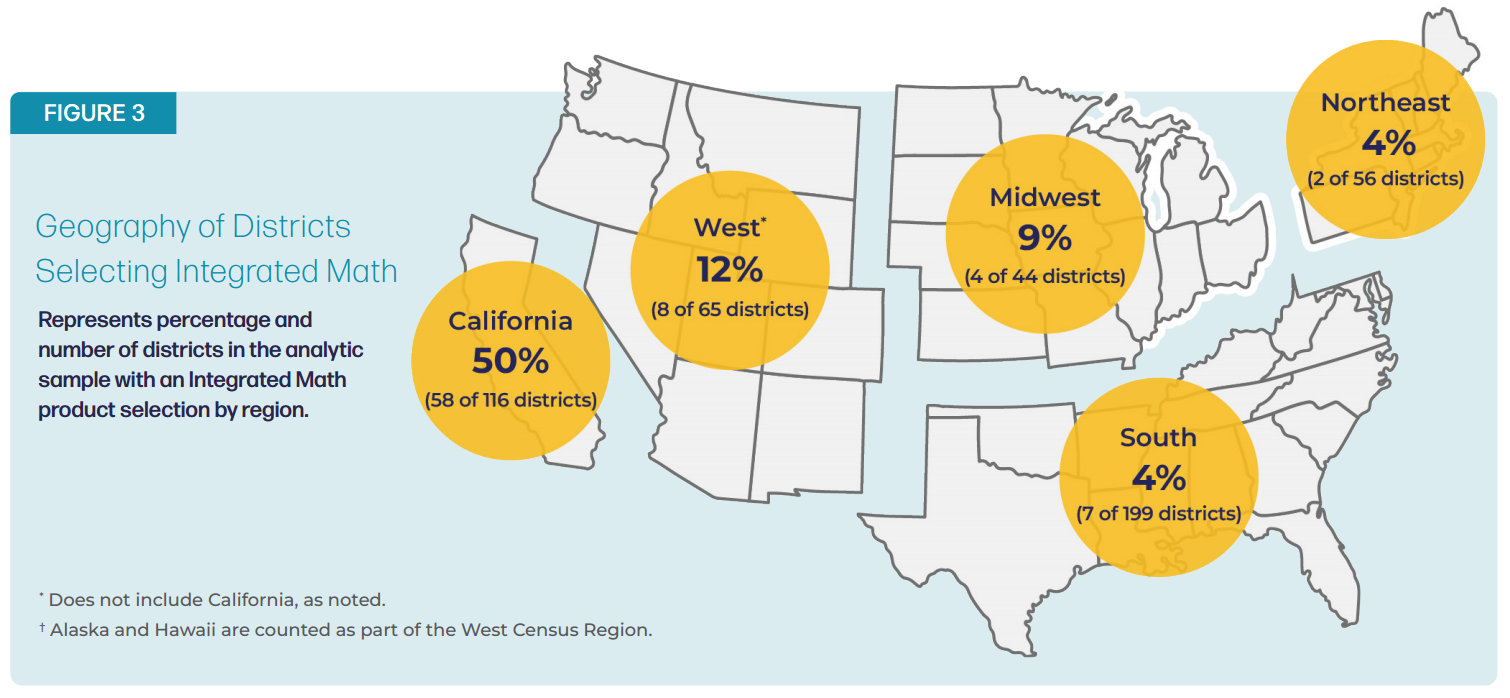 BACK TO MARKET SIGNALS
BACK TO MARKET SIGNALS
Reflecting on Integrated Math: Why Is It Rare in the US and Where Is It Gaining Ground?
Explore the complexities and challenges, from entrenched traditions to policy uncertainties, of integrated math adoption in the US.


The Center for Education Market Dynamics • February 28, 2024
In the United States, math is taught differently than in most other countries. Traditionally, U.S. high school students learn math in a three-year sequence of Algebra I, Geometry, and Algebra II (AGA), each taught separately. But most places, including countries with the highest-performing education systems, such as Japan and Singapore, knit these three subjects together, helping students make connections between them. So, why hasn’t this approach gained traction in the U.S.?
The answer is complicated. For one, Integrated Math is often a tough sell in the U.S., as many stakeholders in high school math (educators, administrators, families, etc.) are steeped in the convention of AGA. Further, there’s been limited U.S.-based research for Integrated Math proponents to bolster their case for this approach. And, the Common Core standards don’t preference one method of teaching math versus the other. The result is a varied and uncertain policy landscape surrounding this question.
Still, Center for Education Market Dynamics (CEMD) data reveals from our recent high school math market report that some U.S. districts are turning to Integrated Math approaches, and there are clear geographic patterns where this is more likely to occur, as shown in the figure below.

In the state of California, for instance, districts in our sample are split roughly equally between AGA and Integrated curricula. And across the West more broadly, the integrated approach appears significantly more common than it is nationally. Even if we separate out California, as we did here, 12% of districts in the West have an integrated curriculum in place, compared to just 4% in both the South and the Northeast.
This finding is notable because several southern states (e.g., Georgia and North Carolina) have tried to drive uptake of the integrated approach through policy mandates and/or incentives. Many of the western states, where Integrated Math is appreciably more popular, have not. This suggests that to the extent we do see an embrace of Integrated Math nationally, the mechanism is both grassroots and regionally contagious.
Want more K-12 education market insights like this one? Be sure to check out CEMD’s latest reports, blogs, and resources.

